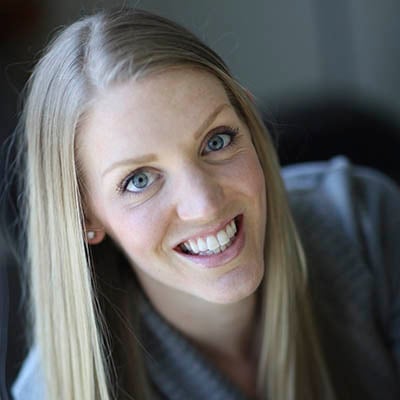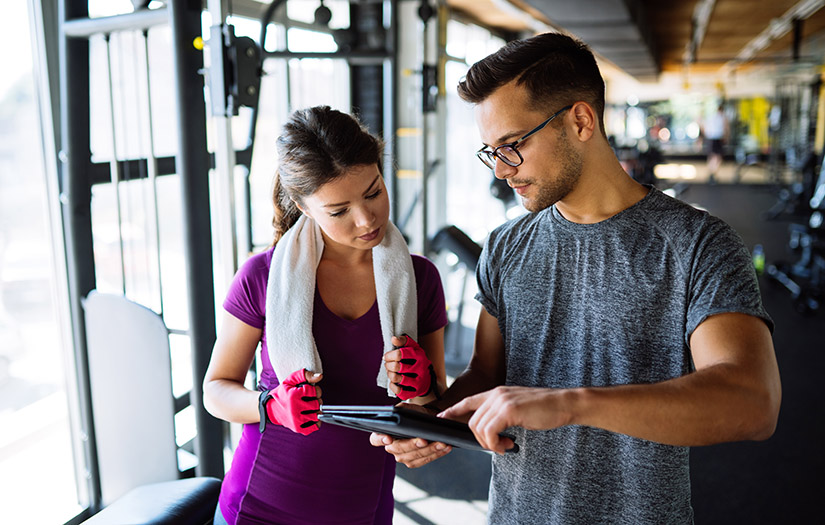By
KINSEY MAHAFFEY
The first initial consultation that I conducted was nerve-racking. As a brand new trainer, I stressed over making sure that I covered all of my bases in gathering the right amount of information during this initial session. It felt like so much information! I would sometimes go into the first training session with a client with follow-up questions from the consultation because I had blanked in the moment.
As I gained more experience, I noticed that it became much easier to get all of the right information that I needed by asking good questions. New trainers have often asked me: “How do you know when to ask questions?” Or, “What questions should you ask to get the information that you need?”
This article aims to share some best-practices regarding asking the right questions during an initial consultation – and it can also help you if you just recieved your personal training certification and are unsure about your initial consultation with new clients.
WHAT IS AN INITIAL FITNESS CONSULTATION?
Before the training program begins, most trainers conduct an initial consultation. This initial session helps get both the trainer and the client on the same page when setting expectations for the training program and goals for the future. I like to think of the initial consultation as a way to learn more about my client’s:
1. Past experiences (in terms of their health and their physical activity habits)
2. Current starting place
3. Goals and expectations for the future
Some trainers will combine the initial consultation with the first workout, and others separate the two. I like to do the initial consultation separately because it allows me to digest the multitude of information that I gather during the consultation. It gives me time to put adequate planning and preparation toward writing their first workout with me.
It’s also an excellent way to ease the client into the program. They get to go to the gym and get a little bit more comfortable with you before you ever put them through a workout.
Most of this information is gathered through forms that you can have your clients fill out and through additional questions that you may ask in conversation. You will also likely do your movement assessments during this initial session (like the Overhead Squat Assessment, for example).
Because this is an information-gathering session, it’s essential to master the art of listening and asking the right questions to set yourself and your client up for success during your time working together.
FORMS TO CONSIDER FOR CONSULTATION
To get the information that you need to help your client reach their goals, you need at minimum a questionnaire that includes both a PAR-Q (Physical Activity Readiness Questionnaire) and a General and Medical History (Including occupational, recreational, and medical information) section.
NASM provides a free “Client Readiness for Exercise” form on their website. You can access this form and other helpful free resources by scrolling down to the “Trainer Resources” section and clicking on “Downloads.”
This form will help you obtain the necessary information from your client before beginning their exercise program. You will also use legal forms (like a Release of Liability form and Payment agreement, for example) and possibly other forms required by your gym. However, the primary focus of this article will be on the Client Readiness for Exercise form, where you’ll gather vital new client information.
PREPARATION FOR THE CONSULTATION
Preparation for an initial consultation begins as soon as the session is scheduled. I’ve found it extremely helpful to send my clients the forms ahead of time to fill out and send back to me before the consultation. I usually ask for them back on a specific date/time that will give me some time to go over them alone. This is beneficial because you won’t be under any pressure or time constraints if you get them ahead of time.
Additionally, you won’t waste any precious consultation time with the filling out and reviewing of forms. When I get the forms back from my client, I highlight portions of the document that require additional information. That way, when I’m sitting down with the client, I can easily spot the areas that I’ve highlighted and made notes with the specific information I’m looking for. This also helps me to stay on track and reminds me that I need that information for programming.
When you take a look at the PAR-Q form, you’ll notice that it says, “If you have answered YES to one or more of the above questions, consult your physician before engaging in physical activity.” It would be best to have your client go to their physician to get medically cleared before an exercise program, especially when they answer “yes” to one or more of the questions on the PAR-Q.
By having them complete the forms in advance, you can catch this early and have them get their medical clearance before coming in. There’s nothing worse than having a client in front of you, ready to get started, and having to tell them that they need to get cleared before they can begin! It’s best if you can take care of this step before they set foot in the gym.
TWO TYPES OF QUESTIONS TO USE DURING YOUR INITIAL FITNESS CONSULTATION
As I have already mentioned, the initial consultation is all about listening, not talking. This consultation is about your client and their needs and goals.
- Open-ended questions
- Closed-ended questions
An example of an open-ended question would be: “What do you hope to gain out of your exercise program?”. This inquiry type opens up the floor for your client and allows them to share as much or as little information as they’d like.
In contrast, a closed-ended question will yield a simple “yes” or “no” answer.
EXAMPLE DIALOGUE
You will likely find that you’ll use a combination of the two during your consultation. Here’s an example dialogue:
The best way to learn more about another person is to ask questions. There are two types of questions that you’ll use during your consultation:
Trainer: “Have you ever lifted weights?” (closed-ended)
Client: “Yes”
“What types of medications are you taking?” “What are they for?”
If you don’t feel comfortable asking them what a medication is for, look it up to know how it may impact them during their workouts.
SIX ADDITIONAL QUESTIONS TO ASK DURING A CONSULTATION
The “Client Readiness for Exercise” does a great job assessing your client’s current occupation and lifestyle, but you will need to ask some additional questions to write their first workout.
Luckily, there’s an “Additional Information” section on the form for you to use! These questions are optional but indeed helpful! Here are some additional questions you might consider having ready for your client during their consultation:
QUESTION #1
This might seem very obvious, but one of the first questions that you might ask your new client is, “What prompted you to start working out with a trainer?”.
You will learn a surprising amount of information about your client from this simple dialogue about their motivations and goals.
QUESTION #2
“What are your goals?” or “What do you hope to achieve during our time together?”
QUESTION #3
“What timeline did you have in mind for your goals?”
QUESTION #4
“Have you worked out with a trainer before?”
a. “What did you like about that experience?”
b. “What didn’t you like about that experience?”
These questions are so important! If there was something about a previous personal training experience that your client did or didn’t like, you want to know about it so that you can offer the best experience possible.
QUESTION #5
“How frequently have you worked out in the past three months?” This looks similar to the question asked in the Recreational section of the questionnaire.
I’ve found that many people think that question asks about sports. It’s good to know if your client is starting from scratch or continuing an existing pattern of regular exercise.
Follow-up questions: “What were you doing for your workouts?” “How many days/week and how long were your sessions?” “Do you plan to continue any of these activities while we are working together?”
QUESTION #6
“What are some of your favorite and least favorite exercises?”
I can’t promise that I won’t have them do their least favorite exercises, but at least I will know! When programming, we want to make the workout beneficial AND enjoyable. Knowing their favorite exercises and/or equipment to use can help us achieve this goal.
POST-CONSULTATION
Once you’ve gathered all of this information, it’s best to take time to review and organize what you’ve learned. It’s essential to have a system to track your client’s goals (determining SMART fitness goals are a great metric for success) and any medical issues you need to keep in mind. You might also consider monitoring some of the vital information that your client gave you about their exercise preferences.
If your client specifically mentioned that they dropped their last trainer because they had to do push-ups every session, you don’t want to make the same mistake! Whether you keep a client file, use a spreadsheet, or an app, it’s important to use this information for your client’s benefit.
After a successful initial consultation, you should have the information you need to write their workouts and succeed in their program. When in doubt, it never hurts to email or text them follow-up questions as needed.
Careful consideration in your questions and good listening skills in the initial consultation show your client that you are invested in them and care about them. That’s a great way to start your trainer-client relationship on the right foot!
Another thing to keep in mind after a initial consultation is to conduct a movement assessment as well. This is a more robust dive into your clients’ movement patterns. You can find a great resource on movement assessments by following the link.
STRENGTH TRAINING PRINCIPLES: HOW TO EDUCATE NEW CLIENTS EFFECTIVELY
THE AUTHOR

KINSEY MAHAFFEY
Kinsey Mahaffey, MPH, is a Houston-based fitness educator, personal trainer and health coach who developed her commitment to lifelong fitness while playing Division I volleyball. She’s passionate about helping others cultivate a healthy lifestyle and enjoys educating other fitness professionals who share this vision. She’s a Master Instructor and Master Trainer for NASM.

